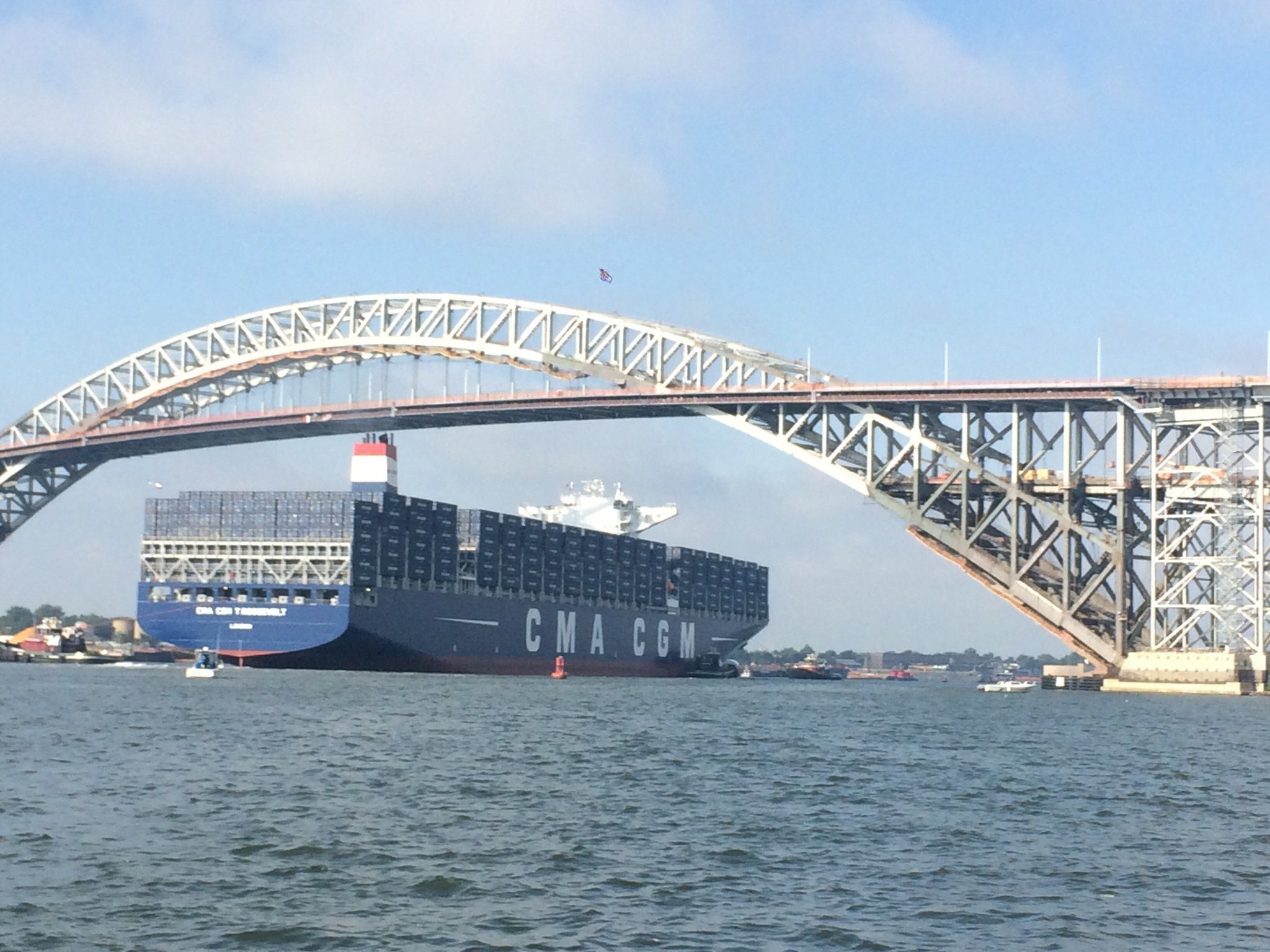India’s Oil Demand Drives CMB Tech Fleet Diversification
By Dimitri Rhodes Nov 7 (Reuters) – Belgian oil tanker company CMB Tech says it will focus on the fast growing market in India as it reported third quarter results...

A CMA CGM containership passes below the Bayonne Bridge in September 2017. Photo: Port of New York and New Jersey
Port of New York and New Jersey has reported 7 percent growth in 2018, surpassing the 7 million TEU mark for first time in its history, helping maintain its position as busiest port on U.S. East Coast.
During 2018, the Port of New York and New Jersey handled 7,179,788 TEUs.
The port said cargo growth was bolstered by an 8.2 percent increase in imported goods including clothing, furniture, electronics and other everyday products over the previous record for imports set in 2017. The Port handled one-third of all containers on the East Coast of North America, increasing its market share of 2.8 percent over last year.
In addition to cargo containers, the port also set a new all-time record for cargo handled by rail, moving 645,760 containers by rail, up 13.8 percent over the previous record set in 2017.
The port also experienced strong volumes in the auto segment. Though total volume was down 0.7 percent when compared to 2017, 573,035 finished vehicles moved through Port of New York and New Jersey facilities during the year. The port said the auto segment contributed more than 500 vessel calls in 2018.
At the passenger ship terminals, more than 856,000 travelers used port facilities in both Brooklyn and at the Cape Liberty Cruise Terminal in Bayonne, New Jersey. Passenger volume was up more than 17 percent when compared to 2017.
The port’s bulk cargoes, including commodities such as road salt, scrap metal and edible oils, also saw strong growth of more than 16 percent as compared to 2017 with a total of 3.68 million metric tons handled in 2018.
“The growth in part can be attributed to the completion in June 2017 of the Bayonne Bridge Navigational Clearance Project, which raised the clearance under the bridge from 151 feet to 215 feet, allowing the world’s largest container ships to pass under it and serve port terminals in New York and New Jersey. Since the bridge project was completed, the port has seen a dramatic increase in the size of vessels calling on the port, with nearly 30 percent of all containerized cargo at the port now carried on vessels with the capacity to handle 9,000 or more TEUs – the size vessel that could not transit under the old Bayonne Bridge,” the port said in a statement.

Sign up for gCaptain’s newsletter and never miss an update

Subscribe to gCaptain Daily and stay informed with the latest global maritime and offshore news


Stay informed with the latest maritime and offshore news, delivered daily straight to your inbox
Essential news coupled with the finest maritime content sourced from across the globe.
Sign Up